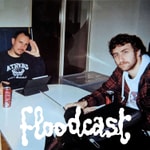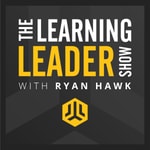Mongabay Newscast – Détails, épisodes et analyse
Détails du podcast
Informations techniques et générales issues du flux RSS du podcast.

Mongabay Newscast
Mongabay
Fréquence : 1 épisode/10j. Total Éps: 320

Classements récents
Dernières positions dans les classements Apple Podcasts et Spotify.
Apple Podcasts
🇫🇷 France - nature
30/07/2025#92🇨🇦 Canada - nature
29/07/2025#99🇫🇷 France - nature
29/07/2025#86🇨🇦 Canada - nature
28/07/2025#80🇫🇷 France - nature
28/07/2025#78🇨🇦 Canada - nature
27/07/2025#64🇫🇷 France - nature
27/07/2025#72🇨🇦 Canada - nature
26/07/2025#48🇫🇷 France - nature
26/07/2025#58🇨🇦 Canada - nature
25/07/2025#31
Spotify
Aucun classement récent disponible
Liens partagés entre épisodes et podcasts
Liens présents dans les descriptions d'épisodes et autres podcasts les utilisant également.
See all- https://www.instagram.com/p
11467 partages
- https://www.instagram.com/mxvisoor
2 partages
Qualité et score du flux RSS
Évaluation technique de la qualité et de la structure du flux RSS.
See allScore global : 73%
Historique des publications
Répartition mensuelle des publications d'épisodes au fil des années.
How coastal communities are adapting to rising seas naturally with Living Shorelines
Épisode 217
mardi 27 août 2024 • Durée 41:31
Homeowners and towns along the U.S. East Coast are increasingly building “living shorelines” to adapt to sea level rise and boost wildlife habitat in a more economical and less carbon-intensive way than concrete seawalls. These projects protect shorelines using a clever mix of native plants, driftwood, holiday trees, and other organic materials.
Peter Slovinsky, a coastal geologist with the Maine Geological Survey, joins the Mongabay Newscast to discuss the benefits of living shorelines, how they are implemented in his state, and what other techniques coastal communities should consider in a world with a warming climate and rising seas.
Read Erik Hoffner’s original reporting on living shorelines here.
Like this podcast? Please share it with a friend and help spread the word about the Mongabay Newscast.
Subscribe to or follow the Mongabay Newscast wherever you listen to podcasts, from Apple to Spotify, and you can also listen to all episodes here on the Mongabay website, or download our free app for Apple and Android devices to gain instant access to our latest episodes and all of our previous ones.
Image Credit: Salt tolerant plants are part of a ‘living shorelines’ project on the Blue Hill Peninsula in Maine. Image by Erik Hoffner for Mongabay.
Time Codes
---
(00:00) Introduction
(02:19) What is a “living shoreline?”
(04:55) Green over gray
(13:06) How to make a “living shoreline”
(18:59) Case studies and urban applications
(24:50) Adaptation methods that deserve more consideration
(31:13) Reconsidering retreat
(32:48) The geologist’s greatest fears and biggest hopes
(39:35) Credits
Experts warn bird flu poses ‘an existential threat’ to biodiversity, and a possible threat to humans
Épisode 216
mardi 20 août 2024 • Durée 27:34
The current clade of H5N1 or bird flu is an "existential threat" to the world’s biodiversity, experts say. While it has infected more than 500 bird and mammal species on every continent except Australia, the number of human infections from the current clade (grouping) 2.3.4.4b is still comparatively small. U.S. dairy workers have recently become infected, and the virus could easily mutate to become more virulent, our guest says.
Joining the Mongabay Newscast to talk about it is Apoorva Mandavilli, a global health reporter for The New York Times. Mandavilli details what virologists and experts know about the human health risks associated with this latest clade, what nations are doing (or not doing) to help contain its spread, and why. She also details how environmental degradation and industrial agriculture help create the conditions for outbreaks like this to occur.
Read Sharon Guynup’s reporting on it here.
Like this podcast? Please share it with a friend and help spread the word about the Mongabay Newscast.
Subscribe to or follow the Mongabay Newscast wherever you listen to podcasts, from Apple to Spotify, and you can also listen to all episodes here on the Mongabay website, or download our free app for Apple and Android devices to gain instant access to our latest episodes and all of our previous ones.
Image Credit: Highly pathogenic avian influenza killed thousands of black-browed albatross (Thalassarche melanophris) chicks in the Falkland Islands and Islas Malvinas, where two-thirds of the entire population lives. Image © Julia Emerit and Augustin Clessin.
Time Codes
---
(00:00) Introduction
(02:44) The evolution of H5N1
(05:47) Clade 2.3.4.4b
(08:21) Challenges in monitoring the spread
(11:10) What are the human health risks?
(16:34) A spotlight on industrialized animal agriculture
(18:26) A vaccination strategy?
(20:05) What lessons are we learning from other pandemics?
(23:08) The degradation of nature and the frequency of disease outbreaks
(25:57) Credits
Unmasking the illusion of renewable biomass energy with Justin Catanoso
Épisode 207
mardi 11 juin 2024 • Durée 51:02
Burning wood to generate electricity – ‘biomass energy’ – is increasingly used as a renewable replacement for burning coal in nations like the UK, Japan, and South Korea, even though its emissions are not carbon neutral.
On this episode of the Mongabay Newscast, reporter Justin Catanoso details how years of investigation helped him uncover a complicated web of public relations messaging used by industry giants that obscures the fact that replanting trees after cutting them down and burning them is not carbon neutral or renewable and severely harms global biodiversity, and forests.
Catanoso lives near biomass industry giant Enviva in North Carolina and has reported on their practices extensively, including the claim that they only use sustainable wood waste in their product, which his investigation disproved. Though it filed for Chapter 11 bankruptcy this year, it remains the single largest producer of wood pellets globally.
“When those trees get ripped out, that carbon gets released. And that comes before we process this wood and ship it…then we burn it and don't count those emissions. This is just [an] imponderable policy,” he says in this episode.
Read Justin's coverage of the UK biomass firm Drax and their attempt to open two large wood pellet plants in California to ship 1 million tons annually to Japan and South Korea, where they will be burned in converted coal plants.
If you enjoy the Mongabay Newscast, please visit www.patreon.com/mongabay to pledge a dollar or more to keep the show growing. Mongabay is a nonprofit media outlet, and all support helps!
See all our latest news from nature's frontline at Mongabay's homepage, mongabay.com, or follow Mongabay on any of the social media platforms for updates.
Please send your ideas and feedback to submissions@mongabay.com.
Image: Wood pellets for biomass energy. Image courtesy of Dogwood Alliance.
---
Timecodes
(00:00:00) Introduction to Biomass and Carbon Emissions
(00:03:08) Understanding the problems with biomass fuel
(00:08:18) Clear-Cutting in North Carolina and British Columbia
(00:12:48) Physics Doesn't Fall for Accounting Tricks
(00:19:55) Understanding the Arguments from the Industry
(00:25:30) Picking Apart the Logic
(00:28:26) Why We Don't Have Long-term Solutions
(00:34:27) Overcoming an Impossible Situation
(00:39:55) Post-chat
(00:49:28) Credits
Vandana Shiva on the agroecology solution for climate change, the biodiversity crisis, and hunger
Épisode 144
mercredi 18 mai 2022 • Durée 01:01:10
Joining us first to discuss agroecology as a science, a practice, and a movement is Dr. Maywa Montenegro, an assistant professor of environmental studies at the University of California, Santa Cruz.
Then host Mike G. speaks with iconic Indian scientist, activist and Right Livelihood Award winner Dr. Vandana Shiva, whose brand new book, Agroecology and Regenerative Agriculture: Sustainable Solutions for Hunger, Poverty, and Climate Change, synthesizes decades of agroecology research and implementation. She's also the founder of Navdanya, which is both an agroecology center and a global food sovereignty movement.
Dr. Shiva shares how agroecology is an effective solution not just to climate change but also for a host of other ecological crises we’re facing, such as water scarcity, land degradation, nutrition and biodiversity loss.
Further reading:
• ”From traditional practice to top climate solution, agroecology gets growing attention” by Anna Lappé
• "Transitioning to sustainable agriculture requires growing and sustaining an ecologically skilled workforce," Frontiers in Sustainable Food Systems, 96. doi:10.3389/fsufs.2019.00096
Episode artwork: Dr. Vandana Shiva, photo by Kartikey Shiva.
If you enjoy the Mongabay Newscast, please visit www.patreon.com/mongabay to pledge a dollar or more to keep the show growing, Mongabay is a nonprofit media outlet and all support helps!
See all our latest news from nature's frontline at Mongabay's homepage, news.mongabay.com or find us on Facebook, Twitter, and Instagram by searching for @mongabay.
Please share your thoughts and ideas! submissions@mongabay.com.
Mongabay Explores: She's here! A Sumatran rhino is born
Épisode 143
mercredi 11 mai 2022 • Durée 15:31
On March 24th, Indonesia's Ministry of Environment and Forestry announced the birth of a new female Sumatran rhino calf at the SRS captive breeding facility at Way Kambas National Park in Indonesia's Lampung province.
For this bonus episode of Mongabay Explores, we speak with senior staff writer for Indonesia, Basten Gokkon. He explains the significance of this event, the difficulty in breeding Sumatran rhinos, and what this birth means for the future of this critically endangered species.
If you missed the ten part series of Mongabay Explores Sumatra, you can find them via the podcast provider of your choice, or locate all episodes of the Mongabay Explores podcast on our podcast homepage here.
Related Reading:
Episode Artwork: Rosa and her child. Image courtesy of Indonesia's Environment and Forestry Ministry.
Please invite your friends to subscribe to Mongabay Explores wherever they get podcasts. If you enjoy our podcast content, please visit www.patreon.com/mongabay to pledge a dollar or more to keep the show growing, Mongabay is a nonprofit media outlet and all support helps!
See all our latest news from nature's frontline at Mongabay's homepage: news.mongabay.com or find us on Facebook, Twitter, Instagram and TikTok by searching for @mongabay.
Feedback is always welcome: submissions@mongabay.com.
Wonder on wings: the fierce nature and enduring beauty of birds
Épisode 143
mercredi 4 mai 2022 • Durée 47:40
It's a really busy time of year for birds all over the world as they migrate and prepare for a new breeding season, so on this episode we discuss the amazing fierceness and beauty of birds, why they deserve your interest and attention, plus some recent research and avian conservation trends in Nepal.
We welcome back the incomparable and award-winning author Sy Montgomery, whose most recent books are all about our avian friends: The Hawk’s Way: Encounters With Fierce Beauty, which is now in stores, and also 2021's The Hummingbird’s Gift: Wonder, Beauty, and Renewal On Wings.
In her signature & wonder-rich way, Montgomery shares some of the truly amazing things learned from personal experiences with falconry and hummingbird rehabilitation, and discusses why we find birds so fascinating.
Host Mike G. also speaks with Mongabay staff writer Abhaya Joshi about the birdlife in his country of Nepal, a new bird-counting app that’s sparking newfound interest there, and some of the most recent conservation actions being taken in the country to protect birds.
Hear Sy Montgomery's previous appearance on this show here (or search for episode #37 in your podcast app):
Further reading about Nepal's birdlife by Abhaya Joshi:
- “Bird-counting app kindles interest in Nepal’s rich avian life”
- “Nepal’s first bird sanctuary takes flight, raising hope for conservation”
- “Study: Farmland birds in Nepal, India in dire need of conservation action”
Episode artwork: Fiery-throated hummingbird at Paraiso del Quetzal, Costa Rica, by Joseph C Boone via Wikimedia Commons.
If you enjoy the Mongabay Newscast, please visit www.patreon.com/mongabay to pledge a dollar or more to keep the show growing, Mongabay is a nonprofit media outlet and all support helps!
See all our latest news from nature's frontline at Mongabay's homepage, news.mongabay.com or find us on Facebook, Twitter, and Instagram by searching for @mongabay.
Please share your thoughts and ideas! submissions@mongabay.com.
Mongabay Explores New Guinea: Community empowerment and forest conservation grow from the galip nut
Épisode 142
mercredi 27 avril 2022 • Durée 48:16
By 2025, the edible nut industry will be worth an estimated $2 billion globally. In Papua New Guinea (PNG), a traditional and plentiful staple, the galip nut (Canarium indicum), holds the promise of tapping into that demand.
Its familiarity and the ease with which it can be grown together with coffee and cocoa is adding up to a new source of income for thousands of small scale farmers across PNG while preserving forest cover.
On this episode of Mongabay Explores, we speak with Dorothy Devine Luana, an entrepreneur from the province of East New Britain, whose company grows galip nuts using agroforestry, a farming technique rooted in traditional knowledge that grows multiple cash crops alongside woody perennials.
We also speak with Nora Devoe, research program manager for a special project focused on the galip nut at the Australian Centre for International Agricultural Research (ACIAR). This project has been funding more than a decade of research seeking to understand the viability and potential of the galip nut to drive the canarium industry in PNG and foster new markets for entrepreneurs and locals like Dorothy to sell the crop.
If you missed the first six episodes of Mongabay Explores New Guinea, you can find them via the podcast provider of your choice, or locate all episodes of the Mongabay Explores podcast on our podcast homepage here.
Episode Artwork: Tinganagalip Women Cooperative Group Chairwoman Caroline Misiel holds a handful of galip nuts. Image by Conor Ashleigh.
Sounds heard during the intro and outro include the following: rusty mouse-warbler, growling riflebird, raggiana/lesser bird-of-paradise, superb fruit-dove, long-billed honeyeater, little shrike-thrush, brown cuckoo-dove, black-capped lory. Special thanks to Tim Boucher and Bruce Beehler for identifying them.
Please invite your friends to subscribe to Mongabay Explores wherever they get podcasts. If you enjoy our podcast content, please visit www.patreon.com/mongabay to pledge a dollar or more to keep the show growing, Mongabay is a nonprofit media outlet and all support helps!
See all our latest news from nature's frontline at Mongabay's homepage: news.mongabay.com or find us on Facebook, Twitter, Instagram and TikTok by searching for @mongabay.
Feedback is always welcome: submissions@mongabay.com.
Convention on Biological Diversity: progress, hope and hard work ahead
Épisode 142
mercredi 20 avril 2022 • Durée 01:06:26
Because the roles and rights of Indigenous communities are widely agreed to be key to its success, we also speak with Jennifer Tauli Corpuz, a member of the Indigenous Caucus at the Convention on Biological Diversity and senior global policy and advocacy lead for Nia Tero.
Jennifer provides the Indigenous perspective on what’s currently in the draft biodiversity framework, what changes are needed to better support Indigenous land rights, and the overall importance of Indigenous leadership toward preserving Earth’s biodiversity.
Related reading:
- Reaching the Paris Agreement without protecting Indigenous lands is ‘impossible’, says report
- Indigenous land rights take center stage in a new global framework for biodiversity conservation
- Climate efforts won’t succeed without secure community rights, says Nonette Royo
- Momentum is building for a ‘robust’ biodiversity framework: Q&A with Elizabeth Mrema
If you enjoy the Mongabay Newscast, please visit www.patreon.com/mongabay to pledge a dollar or more to keep the show growing, Mongabay is a nonprofit media outlet and all support helps!
See all our latest news from nature's frontline at Mongabay's homepage, news.mongabay.com or find us on Facebook, Twitter, and Instagram by searching for @mongabay.
Episode artwork: Red-eyed tree frog. Photo Credit: Rhett A. Butler/Mongabay.
Please share your thoughts and ideas! submissions@mongabay.com.
Mongabay Explores New Guinea: Who is destroying these rainforests? The Tanah Merah mystery.
Épisode 141
mercredi 13 avril 2022 • Durée 48:19
Mongabay Explores is an episodic podcast series that highlights unique places and species from around the globe.
The Tanah Merah project sits in the heart of New Guinea covering 2,800 square kilometers (1,100 square miles). Roughly twice the size of Greater London, it threatens not only dense, primary, tropical rainforest and Indigenous land, but also could release as much carbon as the U.S. state of Virginia emits by burning fossil fuels for an entire year.
However, the true owners of the project have been hidden by a web of corporate secrecy for more than a decade. We speak with Philip Jacobson, senior editor at Mongabay, and Bonnie Sumner, investigative reporter at the Aotearoa New Zealand news outlet Newsroom, to discuss the project from inception to present day, the involvement of a New Zealand businessman, and where the project could go next.
Related Reading:
- The Secret Deal to Destroy Paradise
- New Zealand developer denies key role in giant palm oil project in Indonesia
If you missed the first five episodes of Mongabay Explores New Guinea, you can find them via the podcast provider of your choice, or locate all episodes of the Mongabay Explores podcast on our podcast homepage here.
Episode Artwork: Rainforest in Boven Digoel. Image by Ulet Ifansasti for Greenpeace.
Sounds heard during the intro and outro include the following: rusty mouse-warbler, growling riflebird, raggiana/lesser bird-of-paradise, superb fruit-dove, long-billed honeyeater, little shrike-thrush, brown cuckoo-dove, black-capped lory. Special thanks to Tim Boucher and Bruce Beehler for identifying them.
Please invite your friends to subscribe to Mongabay Explores wherever they get podcasts. If you enjoy our podcast content, please visit www.patreon.com/mongabay to pledge a dollar or more to keep the show growing, Mongabay is a nonprofit media outlet and all support helps!
See all our latest news from nature's frontline at Mongabay's homepage: news.mongabay.com or find us on Facebook, Twitter, Instagram and TikTok by searching for @mongabay.
Feedback is always welcome: submissions@mongabay.com.
Outstanding in the field: researchers head out for a new season
Épisode 141
mercredi 6 avril 2022 • Durée 44:07
It's the start of field research season in many regions--and some scientists haven't gotten afield since the pandemic started--so we're checking in with a couple researchers to hear what they’re planning to work on, out there in the bush.
Our first guest is Meredith Palmer, a post-doctoral researcher at Princeton University whose field work this season is testing new conservation technologies like the BoomBox, an open‐source device that attaches to commercially available camera traps and turns them into an automated behavioral response systems.
Also on the show is Ummat Somjee, a researcher based out of the Smithsonian Tropical Institute in Panama. He uses insects as models to understand the evolution of extreme structures in animals, like the tusks of elephants or the horns of antelopes.
Here are their studies mentioned in this episode:
• Palmer, M. S., Wang, C., Plucinski, J., & Pringle, R. M. (2022). BoomBox: An Automated Behavioural Response (ABR) camera trap module for wildlife playback experiments. Methods in Ecology and Evolution, 13(3), 611-618. doi:10.1111/2041-210X.13789
• Somjee, U., Powell, E. C., Hickey, A. J., Harrison, J. F., & Painting, C. J. (2021). Exaggerated sexually selected weapons maintained with disproportionately low metabolic costs in a single species with extreme size variation. Functional Ecology, 35(10), 2282-2293. doi:10.1111/1365-2435.13888
If you enjoy the Mongabay Newscast, please visit www.patreon.com/mongabay to pledge a dollar or more to keep the show growing, Mongabay is a nonprofit media outlet and all support helps!
See all our latest news from nature's frontline at Mongabay's homepage: news.mongabay.com or find us on Facebook, Twitter, and Instagram by searching for @mongabay.
Please share your thoughts and ideas! submissions@mongabay.com.









